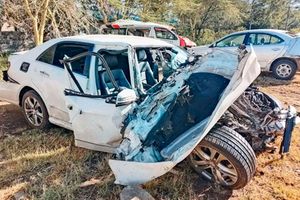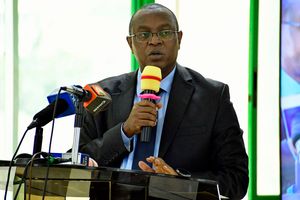Premium
Why you should stop calling August 7th Memorial Park ‘Bomb Blast’

The August 7th Memorial Park at the junction of Haile Selassie and Moi Avenue on August 2, 2023.
On the Friday morning that Kenya, and the world to a wider extent, changed forever, the headline on the Nation was “Bankers’ strike strikes industry …”
Outside the city, MP Kennedy Kiliku was linking clashes in Coast to the agitation for Majimbo (devolved form of government), and in the wider region, former Democratic Republic of Congo President Laurent Kabila was vowing to crush some revolt or other.
All that would cease to matter, in the hours and days and weeks and months to come, when a powerful bomb went off in Nairobi at about half past 10am on Friday, August 7, 1998, targeting the American Embassy then located at the junction of Haile Selassie and Moi Avenue.
American Ambassador Prudence Bushnell was in a meeting with Trade Minister Joseph Kamotho on the 16th floor of the belly-bottom shaped Co-operative House with a gaggle of journalists when the bomb went off outside the American Embassy, damaging it badly, and killing a dozen folks in it.
A further 206 would die outside of the building, many of them buried inside the Ufundi House building (that also housed a college), and more than 5,000 folks were maimed by debris and shrapnel, others blinded by the shards of flying glass (that even landed as far away as Westlands) as the facades of Co-op Bank House were blown out, with papers swirling in the sky like angry birds.

Candles lit during the 25th commemoration of the August 7, 1998 bomb attack held at the August 7th Memorial Park in Nairobi on August 7 2023.
Twenty-nine of these images are captured in the Memorial Park’s middle section, which was collated by Terry Little of the USA, an experienced conservationist of cultural heritage.
Indeed, the work that Little has done at the August 7th Memorial Park that now stands where the embassy used to be, is big, bringing the solemnity of the story to life through texts and pictures, so that future generations will forever know what happened on this day, quarter a century ago in Nairobi.
The memorial space, to the left after you enter the park building, is the most haunting of all. There are 12 flags for the Americans who died there, and dozens for the hundreds of Kenyans killed by the blast, as well as tiny glass cases with the names of everyone who passed away due to the Al-Qaeda attack.
There are also memorial artefacts on the wall. The most touching for me is the one donated by Catherine, the widow of a Mr Madegwa, which is the case he was carrying when the bomb blew his life away. It is a case from Ilrad (International Laboratory for Research and Animal Diseases), and in his neat handwriting are notes from the early morning meeting he had left, with the usual official mundanities about the meeting’s objectives being to “train Management to meet its (1998) targets …”
Madegwa may be no more, but Ilrad is now located in Kabete, on the outskirts of Nairobi, just as the US Embassy is now located within its own fortress in Gigiri, and very close to the Diplomatic Police Unit.
“Almost every embassy and foreign consulate moved out of the CBD after 1998,” Natasha Mbugguss, the General Manager of the August 7th Memorial Park says.
“Many companies and corporates followed, thus making Upper Hill the urban centre of these businesses starting in the year 2000.”

Visitors at the August 7th Memorial Park during the 25th commemoration of the August 7, 1998 bomb attack.
Briton Martin Bernard spear-headed the effort to make the bombed embassy site, and vaporised Ufundi lot, a memorial park.
“He spoke to the Americans, who also purchased the Ufundi House lot, thus giving life to the park and this memorial building simultaneously,” Natasha says. “It was created not just as a commemorative site, but also for members of the public to rest and reflect, as we charge absolutely no entry fee. The Board of Trustees and our many kind sponsors, like Isuzu, ensure we can maintain the grounds superbly.”
Natasha says teachers, chamas, study groups, students, book readers, concert givers, kid party throwers and even “snoozers” weary from city life, find respite here. And there is even a women’s mat weaving group that also exercise therapy.
“We don’t like it when the August 7th Park is referred to as “bomb blast” because that may be quite triggering to many of the survivors.”
In the Interactive section of the Memorial Park building, I stand there for a bit and sport the name Tony Irungu on the chalkboard. Out of the 217 victims, he is my only namesake—I wonder what he was.
I was a “fresher” in the university, living in my late dad’s compound in Ngong.
At about half past 8am, a Ngong matatu dropped me off at the Railways stage, and I crossed the road, past the American embassy, and was tempted to stop to return a book to the American Library at National Bank House.
But poet-architect Alfred Omenya and I had a 9am briefing with Arts’ Officer George Muliro of the British Council at Kenyatta Avenue, so I hurried on.
A hundred minutes later, a truck drove into the embassy!





